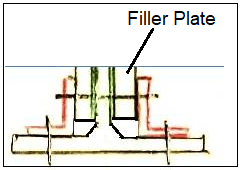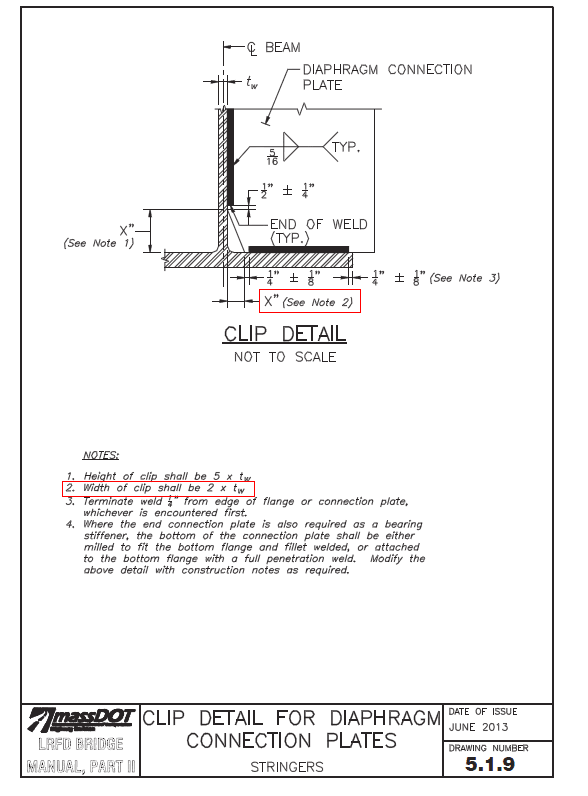AK4S
Structural
- Jan 2, 2015
- 98
I am trying to find the value k1 (Detailing distance from center of web to flange toe of fillet, in.) for the Historic Steel Sections: 27WF102, 33WF130, 33WF141 (year of fabrication 1959).

I need the dimension to estimate the width of fillet weld at the Web-Flange interface in order to estimate the thickness of a filler plate (required to bypass the weld) for the below connection:

Also, is there a minimum dimension I would need to consider (beyond the weld) to estimate the thickness of the filler plate.
Per below extract from the State Bridge Manual for a connection plate, a dimension of 2*tw is recommended.
Considering this would require a considerably thick filler plate. For example for 33WF141, 2*tw = 2 x 0.605" = 1.21".
Any suggestions?


I need the dimension to estimate the width of fillet weld at the Web-Flange interface in order to estimate the thickness of a filler plate (required to bypass the weld) for the below connection:

Also, is there a minimum dimension I would need to consider (beyond the weld) to estimate the thickness of the filler plate.
Per below extract from the State Bridge Manual for a connection plate, a dimension of 2*tw is recommended.
Considering this would require a considerably thick filler plate. For example for 33WF141, 2*tw = 2 x 0.605" = 1.21".
Any suggestions?



![[idea] [idea] [idea]](/data/assets/smilies/idea.gif)
